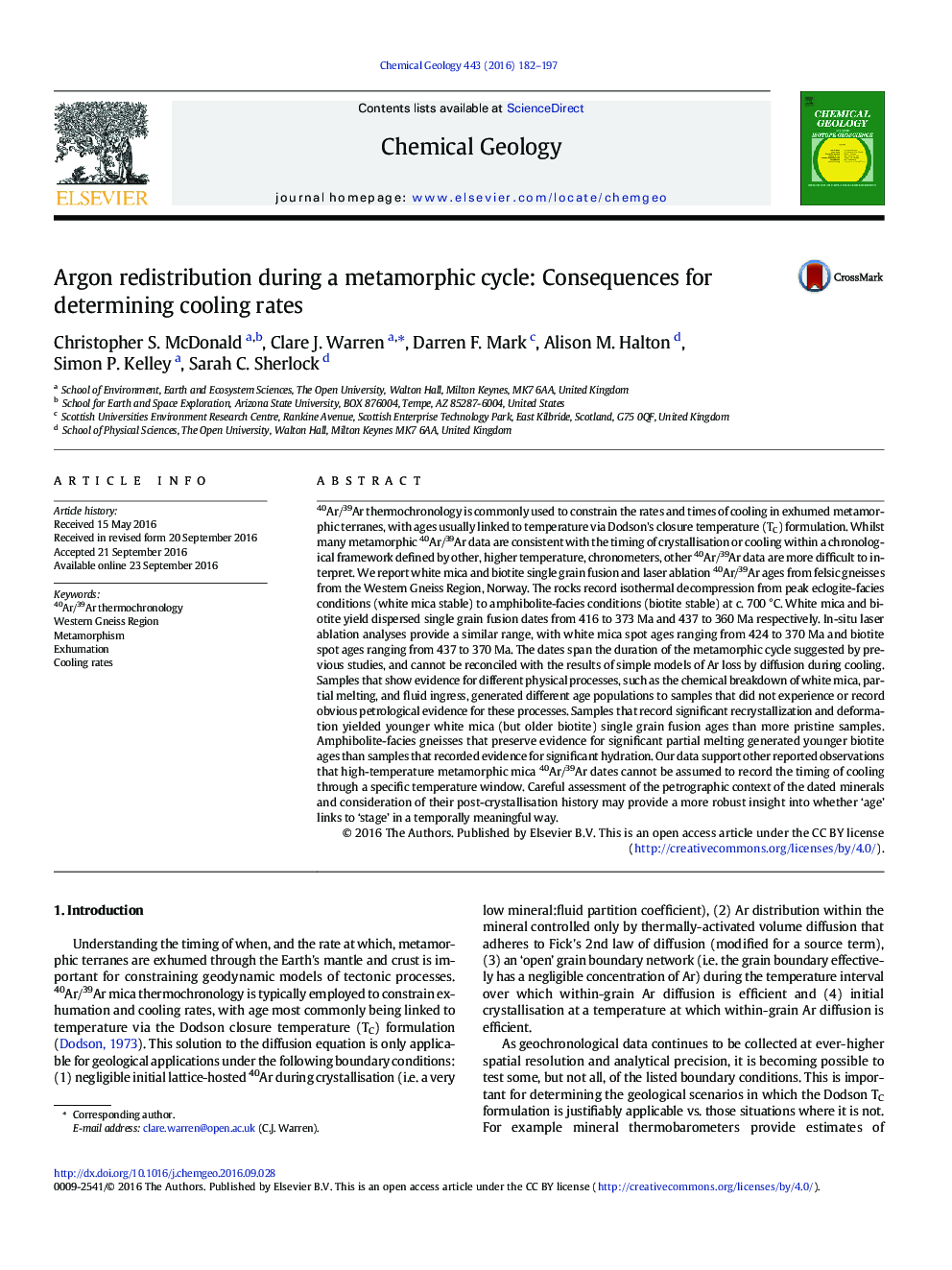| کد مقاله | کد نشریه | سال انتشار | مقاله انگلیسی | نسخه تمام متن |
|---|---|---|---|---|
| 6436005 | 1637531 | 2016 | 16 صفحه PDF | دانلود رایگان |
40Ar/39Ar thermochronology is commonly used to constrain the rates and times of cooling in exhumed metamorphic terranes, with ages usually linked to temperature via Dodson's closure temperature (TC) formulation. Whilst many metamorphic 40Ar/39Ar data are consistent with the timing of crystallisation or cooling within a chronological framework defined by other, higher temperature, chronometers, other 40Ar/39Ar data are more difficult to interpret. We report white mica and biotite single grain fusion and laser ablation 40Ar/39Ar ages from felsic gneisses from the Western Gneiss Region, Norway. The rocks record isothermal decompression from peak eclogite-facies conditions (white mica stable) to amphibolite-facies conditions (biotite stable) at c. 700 °C. White mica and biotite yield dispersed single grain fusion dates from 416 to 373 Ma and 437 to 360 Ma respectively. In-situ laser ablation analyses provide a similar range, with white mica spot ages ranging from 424 to 370 Ma and biotite spot ages ranging from 437 to 370 Ma. The dates span the duration of the metamorphic cycle suggested by previous studies, and cannot be reconciled with the results of simple models of Ar loss by diffusion during cooling. Samples that show evidence for different physical processes, such as the chemical breakdown of white mica, partial melting, and fluid ingress, generated different age populations to samples that did not experience or record obvious petrological evidence for these processes. Samples that record significant recrystallization and deformation yielded younger white mica (but older biotite) single grain fusion ages than more pristine samples. Amphibolite-facies gneisses that preserve evidence for significant partial melting generated younger biotite ages than samples that recorded evidence for significant hydration. Our data support other reported observations that high-temperature metamorphic mica 40Ar/39Ar dates cannot be assumed to record the timing of cooling through a specific temperature window. Careful assessment of the petrographic context of the dated minerals and consideration of their post-crystallisation history may provide a more robust insight into whether 'age' links to 'stage' in a temporally meaningful way.
Journal: Chemical Geology - Volume 443, 2 December 2016, Pages 182-197
